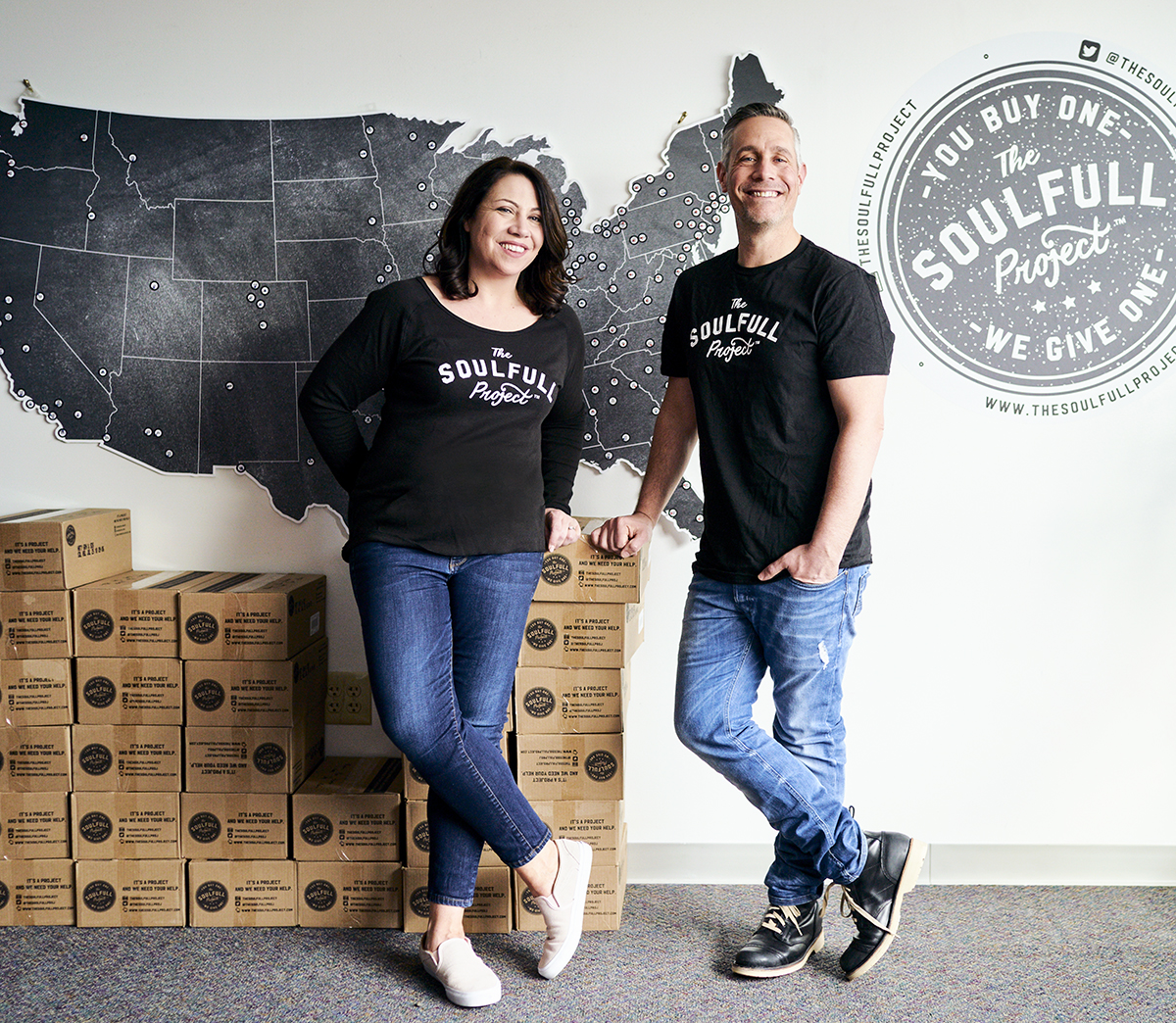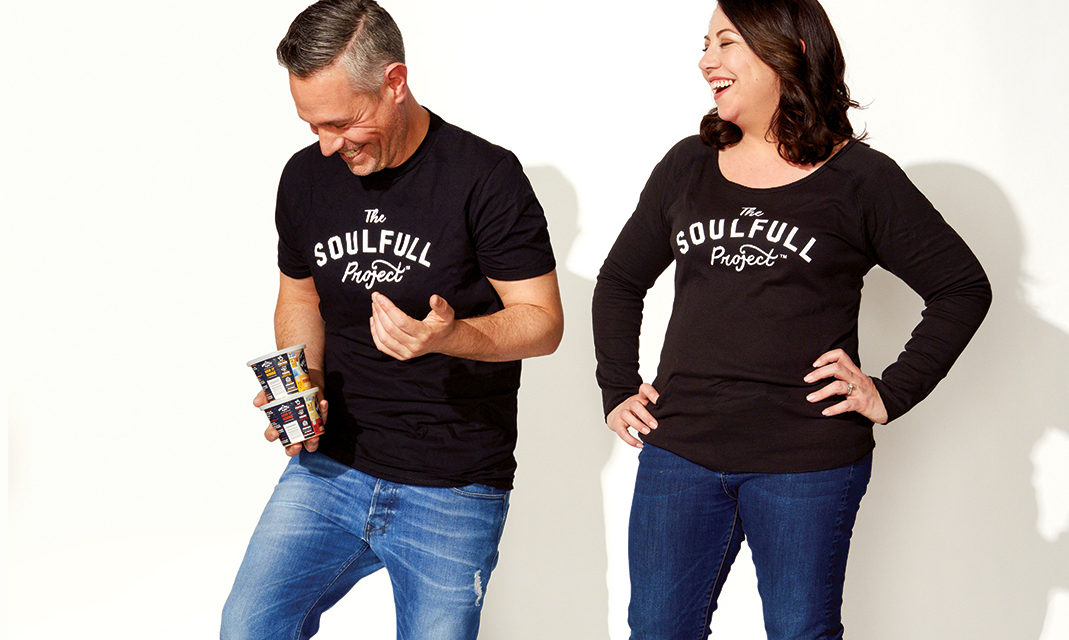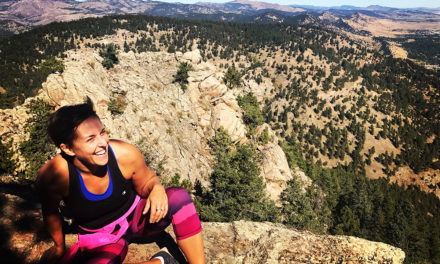Utilizing their knowledge and resources, food-industry veterans Megan Shea and Chip Heim are tackling food insecurity in America, providing 673,410 servings of hot cereal to more than 200 food banks across the United States since The Soulfull Project launched in August 2016. And they’re just heating up.
It was the knock on the door that set everything in motion. Megan Shea and Chip Heim, who were often paired together to work on marketing, design, and innovation for new Campbell Soup Company products, were working late one night on a project in a warehouse across from the corporate headquarters in Camden, NJ. It was a spot they escaped to sometimes to avoid distractions. When they opened the door, a mom and three kids stood before them, hungry and in need.
Megan and Chip scrounged together some food for the family that night, but that didn’t feel like enough. The incident jogged the memory of another family they’d met in Texas the year before as they were gathering consumer research for Campbell’s. That time, it was a single mom with three kids who were all living hand to mouth, refrigerator and pantry virtually empty. The prevalence of food insecurity in this country was setting in, and they wondered if there was something they could do to impact the problem. “That night in the warehouse, Chip and I just started talking, and within 5 minutes we came up with a business model to help families make good food choices,” Megan says. “We thought, Wouldn’t it be incredible if there was a product you could buy and know that with every purchase you were also helping another family?”
Chip remembers it like a lightning bolt. “It was an aha! moment. We were excited. The idea that you could have a direct effect to help someone, instead of just giving 10 percent or a dollar,” he says. “The idea was buy one, give one, and we thought giving a whole meal to someone would be really appealing to people.”
Off the tongue, the idea sounded simple enough—for every hot cereal purchased, a serving would go to a food bank in that area. Megan remembers waking up the next morning and thinking it was still a smart plan, though she knew the execution would be challenging. While they believed there were many people like themselves who wanted to give back and to help people in need but struggled to find ways to fit it into their lives, Megan and Chip still had full-time jobs at Campbell’s, and resources would be meager in the early going. “We both had so many questions and concerns: Do food banks even want this? Are people going to like the product? Can we actually make this happen? Is it scalable?” Megan recalls. “Every day, we had one of those moments of doubt, but we kept moving forward.”
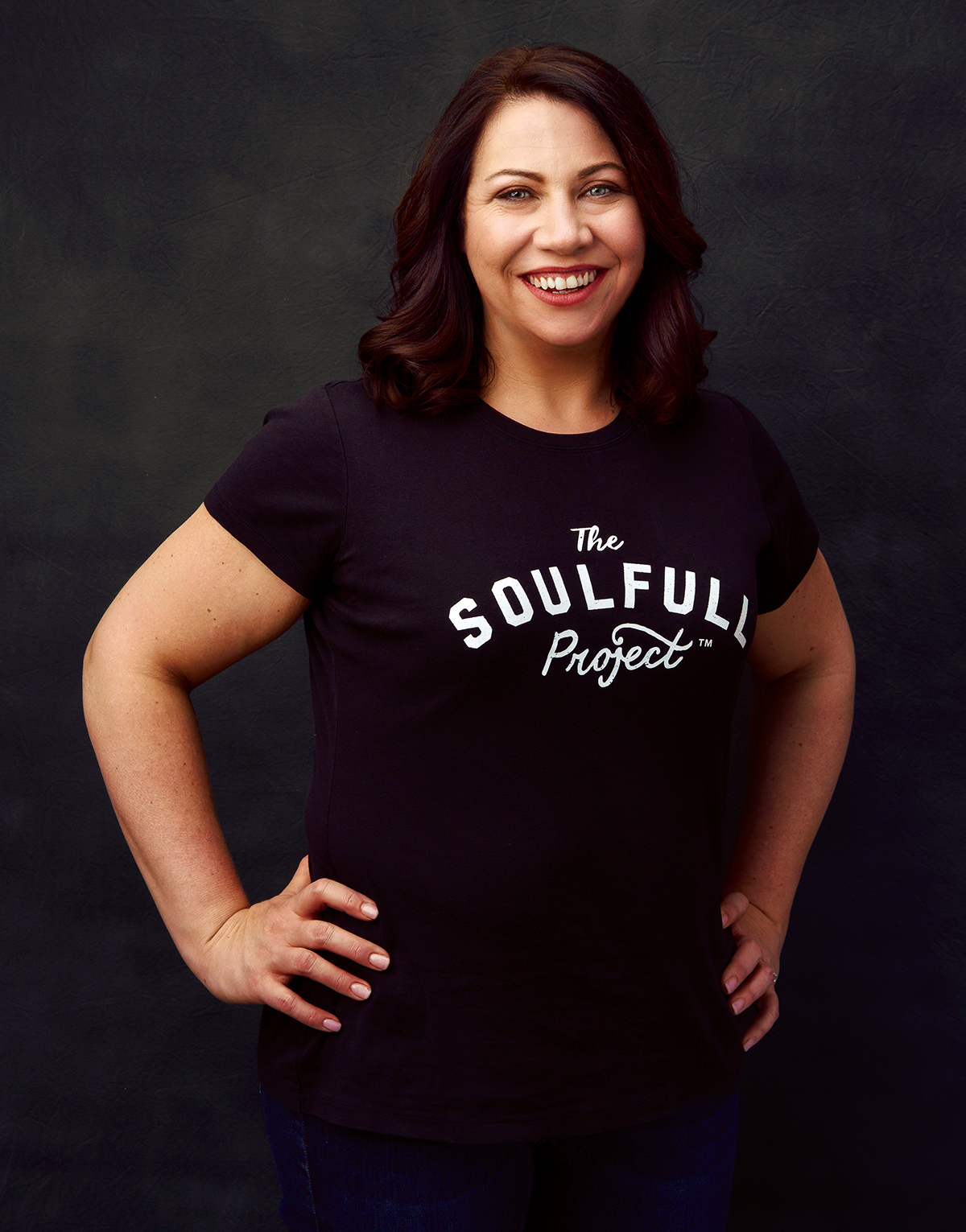
42 million Americans are suffering from food insecurity. Being able to give back every day, it just makes you feel amazing.
How You Can Help Hunger
More than 42 million people in the United States are food insecure. Here are a few ways you can help them:
No Kid Hungry
In addition to working on advocacy, research, and public policy, No Kid Hungry supports the federal food benefits programs, including the School Breakfast Program, the Summer Food Service Program, and the Child and Adult Food Program. “No Kid Hungry is doing smart, practical things like moving breakfast to after the bell at school, so everyone can have it,” says Soulfull’s Megan Shea. “That reduces the stigma so kids don’t feel ashamed to eat.”
nokidhungry.org | (800) 969-4767
Community Food Bank of New Jersey
New Jersey’s largest anti-hunger and anti-poverty organization, the CFBNJ works with volunteers, donors, and partners to fight hunger. They work to fill the nutrition gap faced by kids without access to adequate meals by providing food year-round, including afterschool meals at Kids Cafes and Family Packs for the weekend.
cfbnj.org | (908) 355-3663
Philabundance
What started out as a small food-rescue group has become an impactful and collaborative organization distributing more than 24 million pounds of food a year. Philabundance is a member of Feeding America, a nationwide network of food banks leading the fight against hunger.
philabundance.org | (215) 339-0900
Buy Soulfull
Visit soulfullproject.com and click on the store locator to find nearby vendors selling Soulfull Project products. Soulfull’s hot cereals are available on Amazon and CIBO Gourmet Express Markets in airports across the country. They are also available at Berkeley Bowl, Earth Fare, Jewel-Osco, Wegmans, Central Market, Fred Meyer, Giant, Shaw’s, and Stop & Shop.
OFF AND RUNNING
Megan and Chip named their venture The Soulfull Project and set out to get answers to their questions. Looking back, they didn’t have a handle on the scope of the hunger problem in America in those early days, but they knew they were onto something. They started with the Food Bank of South Jersey, which vigorously embraced the idea and helped them develop their cornerstone product—the Four Grain Blend—which gets donated to the food banks whenever a product is purchased. Since there is a prevalence of diabetes among those facing food insecurity, a Campbell’s chef helped them create a non-GMO cereal that was a blend of whole grains and quinoa, with no sugar added.
Once they had the nuts and bolts arranged and the business plan buttoned up, Megan and Chip prepared to bring the idea to Campbell’s leadership. “We were so nervous that day—we had never presented a business plan. But they said yes immediately. Leadership agreed to fund Soulfull as a new company, but we had to leave our roles at Campbell’s,” Megan says. “So we did, and suddenly we were employed by The Soulfull Project.”
The Soulfull Project became a wholly owned subsidiary of Campbell’s and a Certified B Corporation, a company that has been verified to meet rigorous standards of social and environmental performance, accountability, and transparency.
With the support of Campbell’s at their back and the stamp of approval from Certified B Corporation, Megan and Chip set about selling the product itself. Jeremy Hantke, category manager at Wegmans Food Markets, Inc., agreed to meet with The Soulfull Project, and he was enthusiastic about the concept and the product. “He gave us 14 of his stores, all around food banks, to start out,” Megan says.
The project officially launched in August 2016, and Megan and Chip kicked it off with an ambitious endeavor —100 volunteer events in 100 days. “We felt like, if we were going to do this, we had to learn who we were giving to. We decided we were going to prove that you can make a difference. We set up a plan with our giving partners to do every volunteering event they had over that time period,” Megan says. “We would spend the days working, doing everything from cleaning vegetables in a farm field to packing boxes to handing out food to making sandwiches. It was the best way to start a company because we couldn’t even be anxious. We were so focused on the volunteering and getting the work done that it took the focus off us and put it on the people we were helping.”
The 100 days were physically and emotionally draining, but they also brought huge energy and attention to the project, which began with 300 Facebook followers and zoomed to 19,000 by the end of the 100 days. It also gave the duo clearer insight into what food banks are facing and how they creatively solve problems.
For example, the Food Bank of South Jersey partners with the Campbell Soup Company and local peach farmers to produce more than 40,000 jars of Just Peachy Salsa, which are sold at local markets. Just Peachy Salsa is made from undersized and slightly blemished peaches that would otherwise be thrown away, saving about 80,000 pounds of waste and using a portion of the proceeds to benefit the food bank’s hunger-relief program.
After the 100 days, the next part of their mission was clear. They had to visit food banks nationwide to introduce their program, develop cohesive partnerships, and better understand the scope of the problem and the specific issues in particular regions of the country that needed to be addressed with plenty of imagination and elbow grease. In the last 2 years, Megan and Chip have visited more than 90 food banks across the country, which meant being away from their families and traveling to places like St. George, Utah, and Battle Creek, Mich.
In each location, they would volunteer and get to know the food bank for a few days, often taking red eyes back to Philly in time to see their kids off to school or to make soccer games. “We’ve developed more than 200 giving partners around the country, and we’re on a journey to meet as many of them as possible. Visiting and volunteering with them gives us an opportunity to see how different each one of the food banks really is,” Megan says. “The prevalent theme is that every community is struggling with food insecurity, but they all have unique reasons why. It could be because they have a higher percentage of senior citizens or like in Reading, Pa., where so many of the kids are in the free breakfast program.”
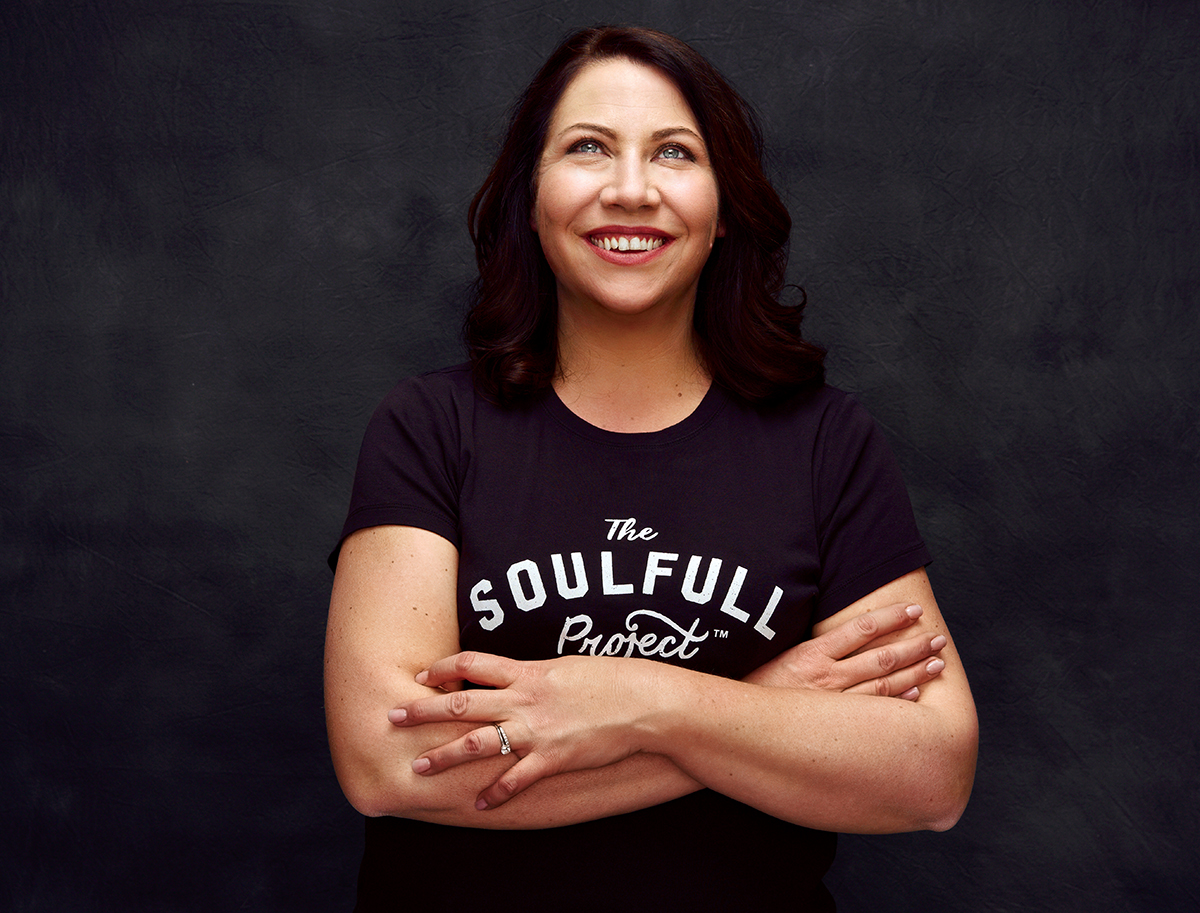
People who use food banks are working like us. Suddenly, they have to make a hard decision between heat and food.
PERSONAL TOUCH
Food banks work incredibly hard to meet the needs of the communities in which they are based, paying special attention to the children. Says Megan, “A woman we met who ran a food bank in North Carolina told us about how she was talking to an elementary school principal down there, and they had a series of snow days. On the third day of no school, the principal got a phone call from a child. He asked if there was school tomorrow. The principal said, ‘Why, aren’t you having fun?’ The boy said, ‘I’m hungry.’ And that really makes you rethink what a snow day is, for example.”
These kinds of stories tug at the heartstrings, but it gives Megan and Chip great hope to see the response from both the food banks and community members in addressing these issues. Chip says programs aimed at addressing hunger have gotten savvier about their delivery mechanisms, understanding that the food that goes home with kids is often shared with other family members. Foods have to be light, so kids can carry them, and they need to be transported in nondescript backpacks so the kids don’t worry about being identified as children in need.
Volunteering and working in tandem with the food banks not only introduced Chip and Megan to people they endeavored to help, but it also let them encounter and come to know other volunteers like Sam, whom they met in Newark, NJ, at a mobile pantry. “He was a 24-year-old guy with a huge grin. He told us he had just moved to Cape May, NJ, from Jackson, Miss. That morning, he got on a bus—3 hours away—to volunteer,” Megan says. “I asked him why he did that, and he said, ‘It’s my birthday, and my mom says on your birthday you need to be in service of others.’ He’s someone I won’t forget.”
Despite all the meals they’ve been able to donate to people in need and the interest from grocery stores and consumers in supporting the program, Megan and Chip still battle uncertainty about whether what they’re doing is actually working. A few weeks ago, on their way home from a food bank, they stopped by a kiosk in the B Terminal of the Philadelphia Airport where The Soulfull Project products are sold. “I walked up to one of the people who worked at the store and asked how it was selling. She said, ‘Hmmm, OK.’ We walked away, and we were like, ‘It’s over! This isn’t working; what are we going to do?’ But then we saw it at another kiosk, and we asked again, and this woman said, ‘It sells all the time! People love it, and they love giving back.’”
While they may not be satisfied with the results yet, Megan and Chip are more certain than ever that two people, a good idea, and a willingness to do the heavy lifting can help a lot of people. And that should feed their souls for the foreseeable future.
